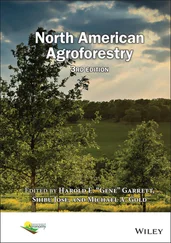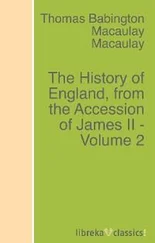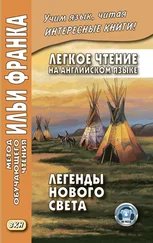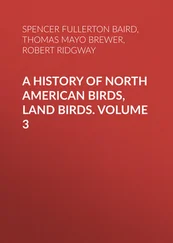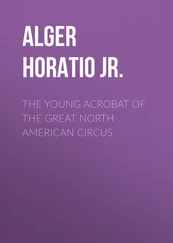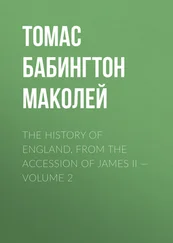Robert Ridgway - A History of North American Birds, Land Birds. Volume 1
Здесь есть возможность читать онлайн «Robert Ridgway - A History of North American Birds, Land Birds. Volume 1» — ознакомительный отрывок электронной книги совершенно бесплатно, а после прочтения отрывка купить полную версию. В некоторых случаях можно слушать аудио, скачать через торрент в формате fb2 и присутствует краткое содержание. Жанр: foreign_antique, Биология, foreign_edu, на английском языке. Описание произведения, (предисловие) а так же отзывы посетителей доступны на портале библиотеки ЛибКат.
- Название:A History of North American Birds, Land Birds. Volume 1
- Автор:
- Жанр:
- Год:неизвестен
- ISBN:нет данных
- Рейтинг книги:3 / 5. Голосов: 1
-
Избранное:Добавить в избранное
- Отзывы:
-
Ваша оценка:
- 60
- 1
- 2
- 3
- 4
- 5
A History of North American Birds, Land Birds. Volume 1: краткое содержание, описание и аннотация
Предлагаем к чтению аннотацию, описание, краткое содержание или предисловие (зависит от того, что написал сам автор книги «A History of North American Birds, Land Birds. Volume 1»). Если вы не нашли необходимую информацию о книге — напишите в комментариях, мы постараемся отыскать её.
A History of North American Birds, Land Birds. Volume 1 — читать онлайн ознакомительный отрывок
Ниже представлен текст книги, разбитый по страницам. Система сохранения места последней прочитанной страницы, позволяет с удобством читать онлайн бесплатно книгу «A History of North American Birds, Land Birds. Volume 1», без необходимости каждый раз заново искать на чём Вы остановились. Поставьте закладку, и сможете в любой момент перейти на страницу, на которой закончили чтение.
Интервал:
Закладка:
Of moderate size; the neck short, or, when lengthened, not accompanied by co-ordinately lengthened legs, these being always shorter than the wing. Bill straight. Tibiæ feathered below. Hind toe present; well developed and functional, though short … Anatidæ.
Bill rather longer than head, cleft to eyes, very stout at base, tapering to the decurved, but not hooked, tip. Nostrils abortive. Gular sac moderate, naked. Wings rather long, pointed. Tail long, stiff, cuneate, twelve to fourteen feathered. Feet nearly beneath centre of equilibrium. General configuration goose-like … Sulidæ.
Bill several times longer than head, slender but strong, depressed, perfectly straight, with small distinct hooked nail at end. Nostrils very small. Gular sac enormous. Mandibular rami meeting only at tip. Wings extremely long, with upward of forty remiges. Tail short, rounded, of twenty or more feathers. Legs beneath centre of equilibrium, extremely short and stout … Pelicanidæ.
Bill about as long as head, stout, straight, scarcely tapering, strongly hooked. Nostrils abortive. Gular sac moderate, but evident; mostly naked. Wings short. Tail large, fan-shaped, scansorial, of twelve to fourteen broad stiff feathers, exposed to the base. Legs inserted far behind centre of equilibrium … Graculidæ.
Bill rather longer than head, slender, perfectly straight, tapering to an acute tip. Gular sac small. Nostrils minute. Wings and tail, and general configuration, as in the last … Plotidæ.
Bill much longer than head, straight, stout, strongly hooked. Nostrils very small. Gular sac well developed. Wings exceedingly long, strong, and pointed. Tail exceedingly long, deeply forked. Feet extraordinarily short; tarsi partly feathered … Tachypetidæ.
Bill about as long as head, straight, stout, tapering to an acute tip. Nostrils small. Gular sac rudimentary, feathered. Wings moderate, pointed. Tail short, but with two central feathers extraordinarily prolonged and filamentous. Feet small, beneath centre of equilibrium … Phæthontidæ.
Nostrils not tubular, lateral, perforate. Bill with continuous covering, or only broken by a sort of cere, hooked or straight to the end. Hallux small and elevated, but always present … Laridæ.
Nostrils tubular, disjoined and lateral, or oftenest superior and united in one double-barrelled tube. Covering of bill in several pieces; bill always hooked. Hallux minute, rudimentary, or absent … Procellariidæ.
Feet four-toed, palmate. Hallux lobate, connected at base with base of inner toe. Tail perfect. Head closely and completely feathered. Nostrils with a depending lobe or flap. Bill straight, compressed, acute … Colymbidæ.
Feet four-toed, lobate. Hallux lobate, free. Tail rudimentary. Head with a naked loral strip and bristly or variously lengthened feathers. Nostrils simple. Bill straight or decurved at end, compressed, acute … Podicipidæ.
Feet three-toed, palmate. Hallux absent. Tail perfect. Head closely feathered or variously crested. Nostrils simple. Bill of indeterminate shape … Alcidæ.
NORTH AMERICAN BIRDS
Family TURDIDÆ.—The Thrushes
The Turdidæ , with the Saxicolidæ and Cinclidæ , form a group closely related, by common characters, and appreciably different from the other Oscines with slender bills and specially insectivorous habits, having, like them, ten primaries (the first much shorter than the second, but nearly always appreciable), and the nostrils uncovered. The great family of Sylvicolidæ , with similar characters of the bill, never present more than nine primaries. The most striking of these common characters is seen in the deeply cleft toes, of which the outer is united by the basal joint alone to the middle toe, while the inner is separated almost to the very base of its first joint. 21 21 In a perfectly fresh specimen of Turdus mustelinus , the basal half of the first phalanx of the inner toe is connected with the first joint of the middle toe by a membrane which stretches across to within two fifths of the end of the latter; there appears, however, to be no ligamentous adhesion. The basal joint of the outer toe is entirely adherent, and a membrane extends from nearly the basal half of the second joint to the distal end of the first joint of the middle toe. When this connecting membrane becomes dried the division of the toes appears considerably greater. When the toes are all extended in line with the tarsus, the hind claw stretches a little beyond the lateral and scarcely reaches the base of the middle claw. The plates at the upper surface of the basal joints of the toes are quadrangular and opposite each other.
The frontal feathers extend, with rare exceptions, to the very nostrils. The bill is elongated and subulate, moderately slender, and usually notched at tip; the culmen moderately curved from the base, and the mouth well provided with bristles, except in a few cases. Usually the scutellæ covering the front and sides of the tarsus are fused into one continuous plate, or else scarcely appreciable, except on the inner edge only; in the Mocking Thrushes they are, however, distinctly marked. The lateral toes are nearly equal, the outer rather the longer. With these as some of the principal characteristics, they may be distinguished from each other as follows:—
Note.—In the present work the length of the tail is measured from the coccyx, inside of the skin, and not, as usually the case, from the base of the quills at their insertion. The wings are measured from the carpal joint, with dividers.
A.Nostrils oval. Loral and frontal feathers with bristly points, or interspersed with bristles; rictus with longer or shorter bristles.
Saxicolidæ.Wings very long and much pointed, reaching beyond the middle of the short square or emarginated tail, and one and a half times or more the length of the latter. The spurious primary very short, the second quill longer than the fourth. In the closed wing the outer secondary reaches only about two thirds the length of longest primary.
Turdidæ.Wings moderate, more rounded, not reaching beyond middle of the often rounded tail, and not more than one and a third the latter, usually more nearly equal. Spurious primary sometimes half the length of second quill; the second quill shorter than the fourth. In the closed wing the outer secondary reaches three fourths or more the length of longest primary.
B.Nostrils linear, in lower edge of nasal membrane. Loral and frontal feathers soft and downy, and no bristles or bristly points whatever about the mouth.
Cinclidæ.Body very short and broad. Wings short, rounded, and concave.
The American Sylviidæ are in some respects very closely related to the Saxicolidæ , but may be distinguished by their much smaller size, more slender and depressed bill, more strongly bristled rictus, etc.; on which account they are more strictly “fly-catchers,” taking their prey in great part on the wing.
Of the three families, the Turdidæ contain a great variety of forms, and exhibit widely different characters, rendering it exceedingly difficult to arrange them in any systematic or regular sequence, or to accurately define their boundaries. In the Birds of North America , the Mocking Thrushes were placed among the Wrens, on account of the distinct tarsal scutellæ, and other characters. We are now, however, inclined to believe, with Dr. Sclater, that their place is with the recognized Turdidæ ; and, among other reasons, on the ground of their more deeply cleft toes, and greater extension forward of frontal feathers. The following synopsis of the North American forms will serve the purpose of determining the genera, even if these are not arranged or combined in a strictly natural manner.
Читать дальшеИнтервал:
Закладка:
Похожие книги на «A History of North American Birds, Land Birds. Volume 1»
Представляем Вашему вниманию похожие книги на «A History of North American Birds, Land Birds. Volume 1» списком для выбора. Мы отобрали схожую по названию и смыслу литературу в надежде предоставить читателям больше вариантов отыскать новые, интересные, ещё непрочитанные произведения.
Обсуждение, отзывы о книге «A History of North American Birds, Land Birds. Volume 1» и просто собственные мнения читателей. Оставьте ваши комментарии, напишите, что Вы думаете о произведении, его смысле или главных героях. Укажите что конкретно понравилось, а что нет, и почему Вы так считаете.


